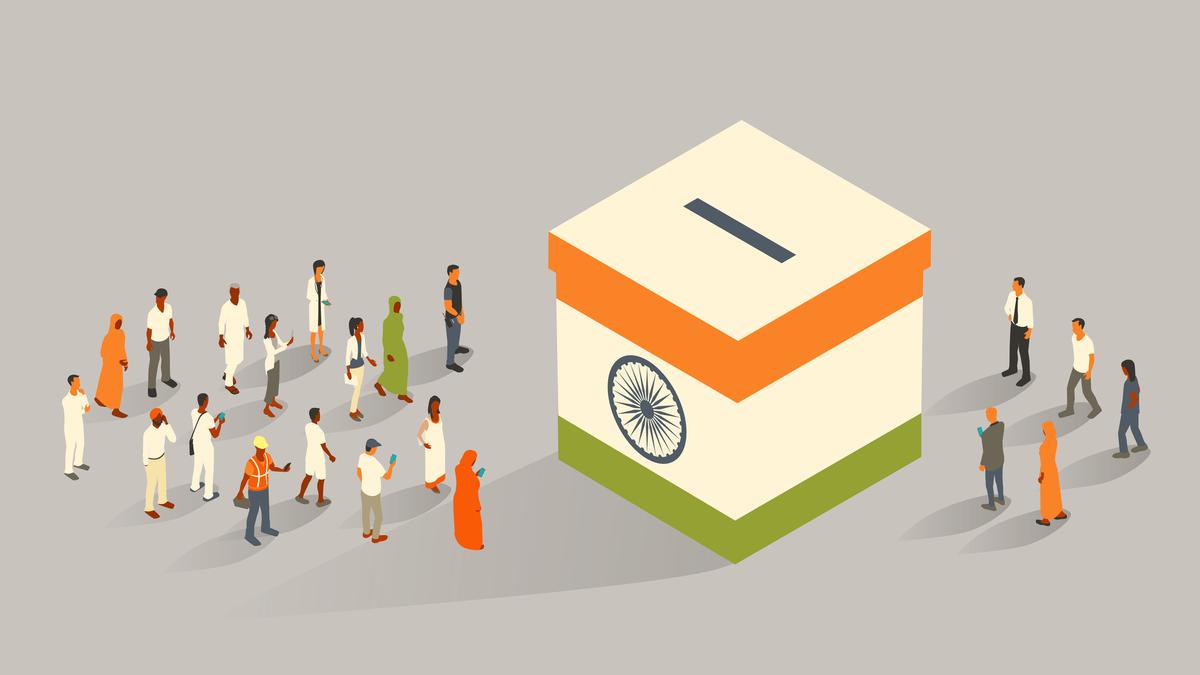- Courses
- GS Full Course 1 Year
- GS Full Course 2 Year
- GS Full Course 3 Year
- GS Full Course Till Selection
- Answer Alpha: Mains 2025 Mentorship
- MEP (Mains Enrichment Programme) Data, Facts
- Essay Target – 150+ Marks
- Online Program
- GS Recorded Course
- NCERT- First Ladder
- Polity
- Geography
- Economy
- Ancient, Medieval and Art & Culture AMAC
- Modern India, Post Independence & World History
- Environment
- Governance
- Science & Technology
- International Relations and Internal Security
- Disaster Management
- Ethics
- Current Affairs
- Indian Society and Social Issue
- CSAT
- 5 LAYERED ARJUNA Mentorship
- Public Administration Optional
- ABOUT US
- OUR TOPPERS
- TEST SERIES
- FREE STUDY MATERIAL
- VIDEOS
- CONTACT US
Over 30,000 Indian Parents Await Adoption
Over 30,000 Indian Parents Await Adoption

Source: April 2025, Rajya Sabha, Ministry of Women and Child Development
- In a recent update to the Rajya Sabha, the Ministry of Women and Child Development (WCD) reported that over 30,000 Indian parents are waiting to adopt children in the country.
- The data, as per the Child Adoption Resource Information and Guidance System (CARINGS) portal, indicates that there are 32,856 in-country prospective adoptive parents (PAPs) and 859 inter-country PAPs waiting for adoption.
- Prospective Adoptive Parents (PAPs) are individuals or couples who are in the process of exploring and applying for adoption, with the goal of becoming the legal and permanent parents of a child in need of a family.
- This reflects the growing demand for adoption, especially in India, where numerous children are still in need of a family.
Legal and Administrative Framework :
- Adoption in India is governed by the Juvenile Justice (Care and Protection of Children) Act, 2015 (JJ Act, 2015).
- It ensures the safety, security, dignity, and well-being of children in need of care and protection.
- The Union Ministry of Women and Child Development (WCD) is the nodal ministry overseeing the adoption process.
- And Central Adoption Resource Authority (CARA), established under the JJ Act, is responsible for regulating both domestic and inter-country adoptions.
- The adoption process is entirely online and managed through the CARINGS portal.
- It ensures transparency and accountability, and there is no scope for illegal adoptions.
- According to the latest data, there are currently only 22 adoption orders pending at the District Magistrate (DM) level across the country.
- It is a significant achievement in reducing delays in the adoption process.
Adoption Statistics and Milestones:
- India has achieved a significant milestone in child adoption with 4,515 adoptions recorded in the financial year 2024-25, marking the highest adoption figure in the last 12 years.
- Out of the total adoptions, 3,950 were domestic, and 565 were international.
- This surge in adoption rates demonstrates both an improvement in adoption procedures and an increasing acceptance of adoption among Indian families.
Key Adoption Institutions and Stakeholders
The States and Union Territories (UTs) are responsible for implementing the JJ Act through various local institutions, such as:
- State Adoption Resource Agencies (SARA): These agencies play a crucial role in facilitating adoption at the state level.
- Child Welfare Committees (CWC): These committees are responsible for ensuring the welfare of children in need of protection and care at the local level.
- District Child Protection Units (DCPUs): These units focus on child protection issues at the district level.
Challenges in Adoption in India
Despite the progress, there are several challenges that still hinder the adoption process:
- Bureaucratic Delays: The average waiting period for adoption is still more than a year due to procedural bottlenecks.
- Age and Ability Bias: Older children and those with disabilities face lower adoption rates, as many prospective parents prefer younger, healthy children.
- Social Stigma and Prejudices: Adoption in India still faces a social stigma, with many people preferring biological children due to societal perceptions of lineage and "bloodline."
Measures to Improve and Expedite Adoption
Several reforms and initiatives have been introduced to address these challenges:
- Legal Reforms: The Juvenile Justice (Care and Protection of Children) Amendment Rules, 2022 have empowered District Magistrates (DMs) to directly handle adoption-related matters, speeding up the process.
- CARINGS Portal: The fully online, transparent adoption process through the CARINGS portal ensures that all adoptions are ethical and legal, significantly reducing the chances of illegal adoptions.
- Mission Vatsalya Scheme: This initiative supports children living in Child Care Institutions and promotes family-based care, including adoption, further helping children find permanent homes.
Conclusion
While challenges persist, the adoption landscape in India has seen substantial improvements due to legal reforms, transparency through the CARINGS portal, and ongoing government initiatives like the Mission Vatsalya Scheme. With over 30,000 parents awaiting adoption, the government’s continuous efforts to streamline the adoption process and address societal challenges are critical in ensuring that children in need of care find loving and secure families.
|
Also Read |
|
| Public Administration Optional | |
| UPSC Monthly Magazine | Question Answer Practice For UPSC |




